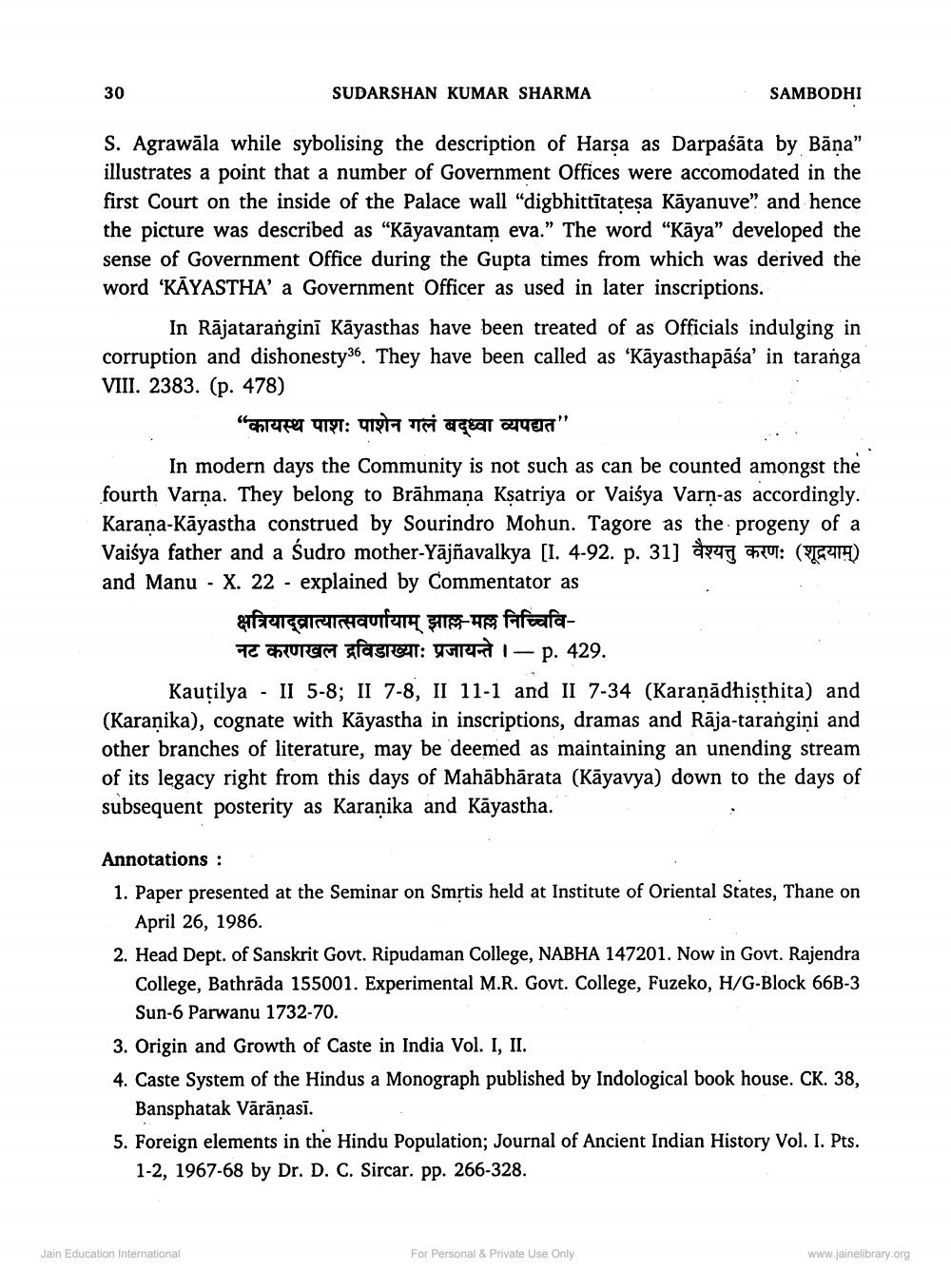________________
30
SUDARSHAN KUMAR SHARMA
SAMBODHI
S. Agrawāla while sybolising the description of Harsa as Darpaśāta by Bāna” illustrates a point that a number of Government Offices were accomodated in the first Court on the inside of the Palace wall “digbhittītatesa Kāyanuve" and hence the picture was described as "Kāyavantam eva." The word "Kāya" developed the sense of Government Office during the Gupta times from which was derived the word 'KAYASTHA' a Government Officer as used in later inscriptions.
In Rājataranginī Kāyasthas have been treated of as Officials indulging in corruption and dishonesty36. They have been called as 'Kāyasthapāśa' in taranga VIII. 2383. (p. 478)
“कायस्थ पाशः पाशेन गलं बद्ध्वा व्यपद्यत" In modern days the Community is not such as can be counted amongst the fourth Varņa. They belong to Brāhmana Kșatriya or Vaiśya Varņas accordingly. Karana-Kāyastha construed by Sourindro Mohun. Tagore as the progeny of a Vaiśya father and a śudro mother-Yājñavalkya [I. 4-92. p. 31] 4847 4: (419) and Manu - X. 22 - explained by Commentator as
क्षत्रियाद्वात्यात्सवर्णायाम् झाल्ल-मल्ल निच्चिवि
TE ouren glasien: yoti - p. 429. Kautilya - II 5-8; II 7-8, II 11-1 and II 7-34 (Karanādhisthita) and (Karanika), cognate with Kāyastha in inscriptions, dramas and Rāja-tarangini and other branches of literature, may be deemed as maintaining an unending stream of its legacy right from this days of Mahābhārata (Kāyavya) down to the days of subsequent posterity as Karanika and Kāyastha.
Annotations : 1. Paper presented at the Seminar on Smộtis held at Institute of Oriental States, Thane on
April 26, 1986. 2. Head Dept. of Sanskrit Govt. Ripudaman College, NABHA 147201. Now in Govt. Rajendra
College, Bathrāda 155001. Experimental M.R. Govt. College, Fuzeko, H/G-Block 66B-3
Sun-6 Parwanu 1732-70. 3. Origin and Growth of Caste in India Vol. I, II. 4. Caste System of the Hindus a Monograph published by Indological book house. CK. 38,
Bansphatak Vārāṇasī. 5. Foreign elements in the Hindu Population; Journal of Ancient Indian History Vol. I. Pts.
1-2, 1967-68 by Dr. D. C. Sircar. pp. 266-328.
Jain Education International
For Personal & Private Use Only
www.jainelibrary.org




